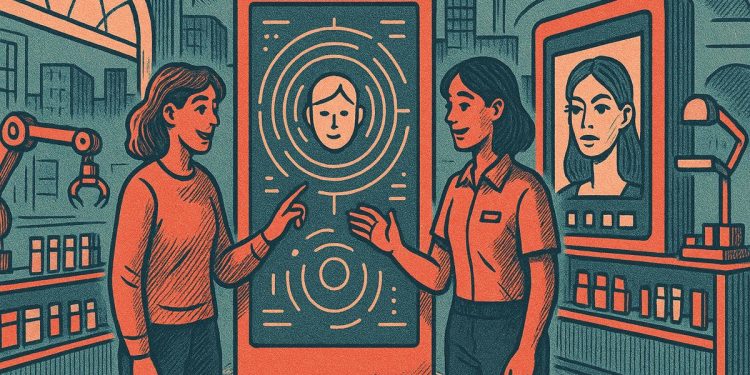Ulta Beauty is transforming its retail operations with smart agentic AI, improving customer and staff experiences. They prioritized foundational tech improvements, integrated customer data, and trained employees before deploying AI tools like virtual advisors and in-store robots. This strategy has resulted in reduced stockouts, enhanced personalization, and increased satisfaction. Ulta’s success comes from focusing on getting the basics right before implementing advanced AI, positioning them as a retail innovation leader.
How is Ulta Beauty transforming its retail operations with agentic AI?
Ulta Beauty is leading enterprise retail transformation by adopting agentic AI, which involves upgrading core technology, unifying customer data, and training 40,000 associates as AI collaborators. This foundation enables AI-driven tools like virtual advisors, AR concierges, and automated inventory management, resulting in higher efficiency and improved customer experiences.
Ulta Beauty’s roadmap to agentic AI – autonomous systems that work alongside people instead of just serving them – is no longer a slide deck. By mid-2025 the company has already completed the unglamorous but critical groundwork: a three-year overhaul of legacy SAP, a unified customer data lake, and a staff-upskilling program that has turned more than 40 000 store associates into trained AI collaborators.
Phase 1: Replace the tech spine before talking agents
Project SOAR, finished in late 2024, swapped out 20-year-old SAP instances for a cloud-native stack that feeds every channel – stores, app, TikTok shop, BOPIS kiosks – from the same real-time inventory engine.
Impact so far, per Fortune:
– Stock-outs down 18 %
– Ship-from-store orders up 32 % (now ~12 % of digital sales)
Phase 2: Build one source of customer truth
Next, Ulta merged 44 million loyalty profiles, email IDs, in-store receipts and social handles into a single environment. The payoff is quantifiable:
| Metric | Before (2023) | After (Q2-2025) |
|---|---|---|
| Personalised offers sent daily | < 1 M | 14 M |
| Campaign build time | 7 days | 15 minutes |
| Repurchase rate | 85 % | 95 % |
Source: PYMNTS coverage
Phase 3: Train humans first, deploy AI second
All associates now complete a three-hour “AI sidekick” micro-certification. Topics: when to hand off shade-matching to GlamLab 2.0, how to interpret AI-generated skin-diagnosis reports, and how to escalate edge cases. Early internal data show associates using AI tools log 11 % higher average tickets than control groups.
What agents are actually doing today (pilot stores)
- AR concierges: GLAMlab stations run on NVIDIA GPUs let guests test 2 300 SKUs in under two minutes; users convert at 1.9× the normal rate.
- Luum robot lashes: In ten test stores, a six-minute AI-guided lash application adds incremental revenue without extra staffing.
- Virtual advisors: Generative-AI chat answers 82 % of routine questions on ulta.com, cutting call-center volume by 24 %.
Looking ahead: 2026 roll-out map
| Quarter | Milestone |
|---|---|
| Q4 2025 | Agentic inventory agents auto-replenish prestige fragrance walls |
| Q1 2026 | Payroll bots publish optimal shift schedules 14 days out |
| Q2 2026 | AI “beauty coach” pushed to mobile app for personalised regimen scripts |
CEO Kecia Steelman recently told CIO Dive the company will not measure success by bot volume but by “guest NPS + associate ease index.” Both metrics are already trending upward: NPS up 6 points YOY, internal engagement surveys show 72 % of staff feel technology makes their job easier, up from 48 % pre-SOAR.
Bottom line: Ulta is treating AI not as a shiny store gadget, but as a new operating system for retail. The agents arrive only after the pipes, data and people are ready – a foundation-first route that the rest of beauty retail is now racing to replicate.
What exactly is Ulta Beauty building before the AI agents arrive?
Ulta is re-wiring every data pipe in the company.
Over the last three years the retailer replaced legacy SAP systems (the Project SOAR overhaul) and centralised 44 million customer profiles that once lived in siloed loyalty, e-mail and POS databases.
95 % of Ulta’s 2025 sales already come from these loyalty members, so clean, real-time data is treated as the non-negotiable entry ticket for any autonomous agent that will touch product, pricing or promotions.
How will store employees experience the change?
Not with layoffs, but with robot colleagues and smarter dashboards.
- Luum (lash-extension robot) and 10Beauty (manicure robot) are in pilot in a handful of stores, taking over repetitive tasks so associates can focus on high-touch consultation.
- AI-powered schedule and payroll tools launched in Q1 2025 have already cut admin hours and re-allocated more floor staff to peak traffic windows.
Ulta’s internal training team is running “AI side-kick” workshops; goal is to have every beauty advisor certified on co-working with AI assistants before agentic systems go live in 2026.
What new experiences will shoppers see first?
GlamLab 2.0 virtual try-on (make-up, hair colour, hairstyles) rolled out chain-wide in early 2025.
Powered by NVIDIA GPUs and StyleGAN2, the tool produces a < 300 ms realistic preview on mobile or in-store mirrors.
Early metrics from the pilot: users of virtual try-on convert at 2.4× the rate of non-users.
Next on the roadmap are AI agents embedded in:
- Ulta Beauty Advisor Chat (already live) – generative-AI beauty expert accessible 24/7 on app and web.
- Personal reorder agents – autonomous reminders that restock a customer’s foundation the moment colour-matching data predicts it is running low.
How big is the expected financial upside?
During the Q1 2025 earnings call Ulta lifted full-year sales guidance to $11.5 – 11.7 billion, up from an earlier $11.3 – 11.5 billion range.
Management attributed about one-third of the incremental growth to “AI-enabled productivity and personalization”.
No hard agentic-AI figures yet – the programme is pre-revenue – but Ulta’s CFO flagged a target 200–250 bps operating-margin expansion by FY 2027 if agent roll-outs stay on schedule.
How does Ulta’s progress compare with beauty rivals?
- L’Oréal remains the science leader with in-house ModiFace; integration depth is highest but comes from a manufacturer’s point of view.
- Estée Lauder pursues a partnership model (Microsoft, OpenAI) and has 240+ internal GPTs, yet integration is described as “moderate” versus Ulta’s end-to-end retail stack refresh.
- Coty focuses on operational AI for cost savings – $130 million in new fixed-cost reductions since 2021.
Ulta is the only major retailer among the group, positioning its AI foundation as a channel-edge play: better data, faster experimentation, and now the clearest public roadmap for agentic AI in physical stores.



















